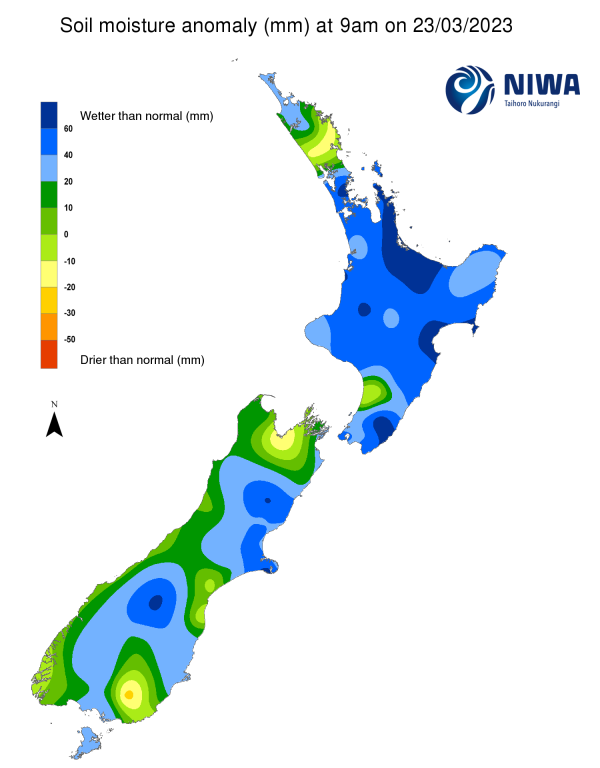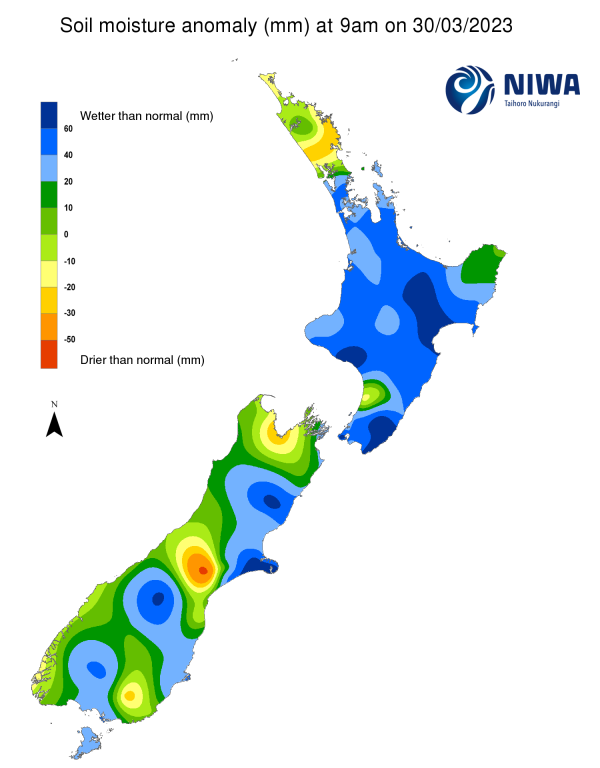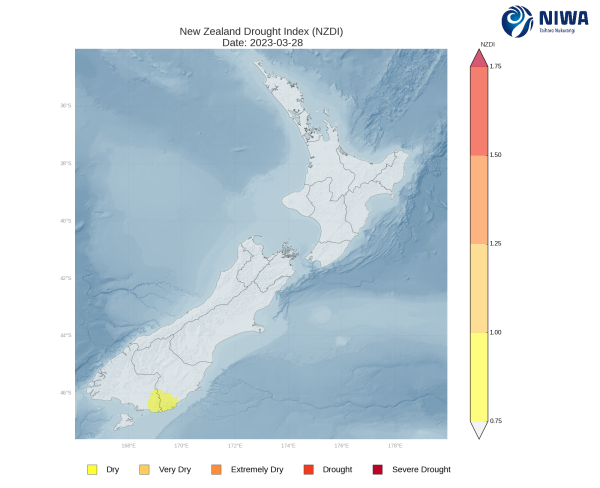A weekly update describing soil moisture patterns across the country to show where dry to extremely dry conditions are occurring or imminent. Regions experiencing significant soil moisture deficits are deemed “hotspots”. Persistent hotspot regions have the potential to develop into drought.
Note: This is the final Hotspot Watch for this season. The Hotspot Watch will return in the spring. In the meantime, forecasts for rainfall, dryness and drought can be found at: https://shiny.niwa.co.nz/drought-forecast/
Facts: Soil Moisture
In the North Island, meagre rainfall occurred in the past week across Northland, Auckland, Waikato, Bay of Plenty, and Gisborne, where most locations received less than 5 mm. Farther south, most locations received 15-25 mm, although locally higher totals of 30-60 mm were observed in parts of Manawatū-Whanganui and Wellington. This resulted in most locations in the North Island seeing small to moderate soil moisture decreases in the past week, especially in northern regions. However, small soil moisture increases were observed in Manawatū-Whanganui and Wellington. The driest soils across the North Island, when compared to normal for this time of the year, are found in southern Northland, while the wettest soils for this time of the year are found in Hawke’s Bay, coastal Manawatū-Whanganui, and Wairarapa.
In the past week, a new hotspot has formed in southwestern Northland.
In the South Island, much of the West Coast received 40-70 mm of rainfall in the past week, with up to 100 mm in parts of Fiordland. Pockets of 30-50 mm also occurred in central Canterbury, Otago, and Southland, while the remainder of the island generally received 10-25 mm. This resulted in minor soil moisture decreases for most locations, although small increases occurred in central Canterbury. The driest soils in the South Island, when compared to normal for this time of the year, are located in Greater Nelson, while the wettest soils for this time of the year are found in northern and central Canterbury.
In the past week, the previous hotspot that had been located in the Nelson area has re-emerged. As of 28 March, the New Zealand Drought Index (NZDI) map below shows that dry conditions are currently located in southern Otago and eastern Southland.
Outlook and Soil Moisture
In the North Island, a front will move across on Saturday (1 April) with a period of rain and thunderstorms. The heaviest rainfall is expected in northern and western regions. A few more isolated to scattered showers are likely on Sunday and Monday before high pressure brings dry weather in the middle of next week. On or around Thursday (6 April), another front may bring additional showers. Weekly rainfall totals of 15-30 mm are likely for much of the island, but 15 mm or less may occur in the upper North Island.
Due to the expected rainfall in the next week, soil moisture levels will likely decrease at least a small amount in the upper North Island and east coast, with generally little change expected elsewhere. The current hotspot in southwestern Northland may strengthen in the next week, while a new hotspot may form near Cape Reinga.
In the South Island, the West Coast will see moderate to heavy rain on Saturday (1 April). Any rain will taper off on Sunday, with showers elsewhere in the island. After mostly dry weather on Monday and Tuesday, another front will bring additional rain on Wednesday and Thursday (5-6 April). Weekly rainfall totals of 50-100 mm are expected for the West Coast and Fiordland, while the remainder of the South Island is most likely to receive 10-30 mm.
Due to the expected rainfall in the next week, soil moisture levels along the West Coast and lower South Island may not change significantly, while small decreases could occur elsewhere. The current hotspot in the Nelson area is unlikely to change significantly in the next week.
Background:
Hotspot Watch: a weekly advisory service for New Zealand media. It provides soil moisture and precipitation measurements around the country to help assess whether extremely dry conditions are imminent.
Soil moisture deficit: the amount of water needed to bring the soil moisture content back to field capacity, which is the maximum amount of water the soil can hold.
Soil moisture anomaly: the difference between the historical normal soil moisture deficit (or surplus) for a given time of year and actual soil moisture deficits.
Definitions: “Extremely” and “severely” dry soils are based on a combination of the current soil moisture status and the difference from normal soil moisture (see soil moisture maps).
Hotspot: A hotspot is declared if soils are "severely drier than normal" which occurs when Soil Moisture Deficit (SMD) is less than -110 mm AND the Soil Moisture Anomaly is less than -20 mm.
Pictured above: Soil Moisture Anomaly Maps, relative to this time of year. The maps show soil moisture anomalies over the past two weeks.
New Zealand Drought Index (NZDI)
As of 28 March, the New Zealand Drought Index (NZDI) map below shows that dry conditions are currently located in southern Otago and eastern Southland. Please note: some hotspots in the text above may not correspond with the NZDI map. This difference exists because the NZDI uses additional dryness indices, including one which integrates the rainfall deficit over the past 60 days. Changes are therefore slower to appear in the NZDI compared to soil moisture anomaly maps that are instantaneously updated.




